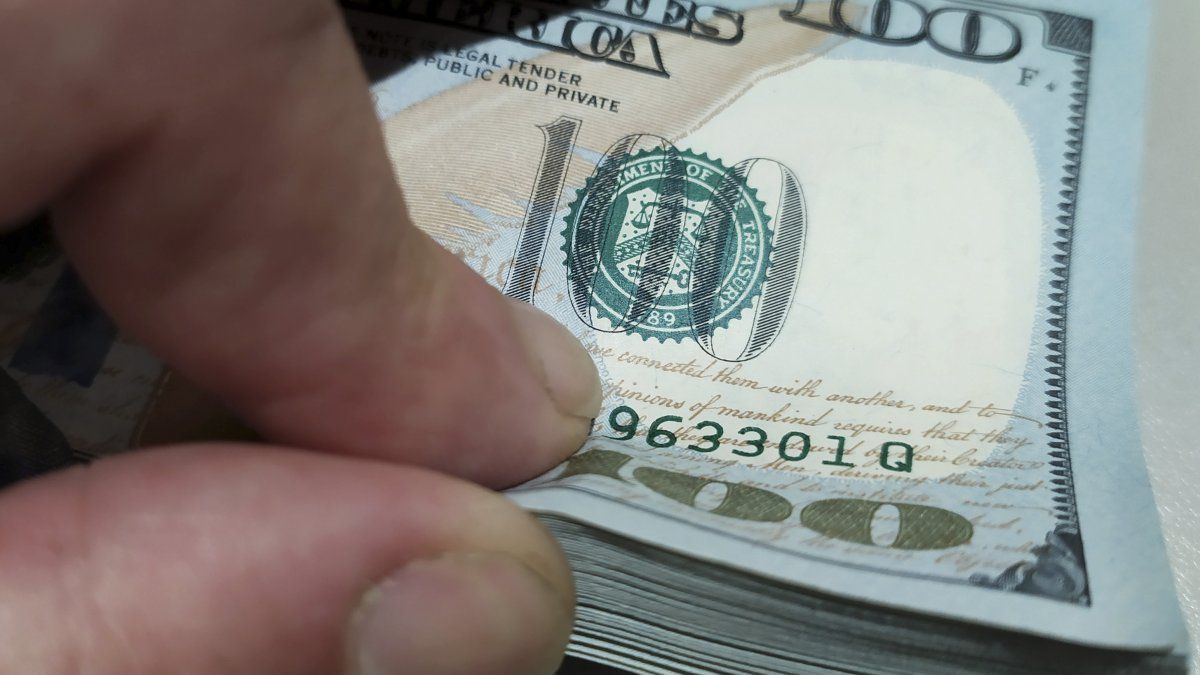The financial conditions improve and they leave an area of severe stress for the first time in 28 months. This was indicated in the latest March report from the IAEF together with the consulting firm Econviews. He ICF captures the state of 10 local and 10 international variables relevant to explain the business climate in Argentina and quantifies its evolution month by month.
The Financial Conditions Index rose from -57.4 to -7.3 in March. It has earned 175 points since the November runoff and left the severe stress zone (below -10 points) for the first time since October 2021. The correlation – with a lag – between ICF and the level of activity is noted in the 5.8% drop in GDP between October and January.
According to the report, the financial conditions are normalizing but “more or less.” The ICF measured -7.3 points in March, very close to 0, which represents its historical average, neither comfort nor stress. External conditions achieved a score that is within the highest 10% since 2005, with a “risk-on” climate very favorable to bonds, currencies and stocks of emerging countries”. However, they warned: “It must be said that Argentina also benefited from this global trend, although without a doubt There are domestic factors at play.”
Local conditions rose 46 points and rebounded almost 150 from the November minimum, with dollar bonds (country risk), Merval and dollar deposits as stars. Even with the recent improvement, local indicators remain in a similar place to the one they occupied between mid-2020 and 2022. That is, they moved away from panic values of the pandemic, Guzmán’s departure or the 2023 runoff, but still rThey reflect an economy loaded with expectations of devaluation and inflation and interest rates that are too high.
Bonds and stocks: the rally continues
In March the protagonists were the dollar bonds. The country risk fell almost 300 bps in the average of the month and 1,300 bps since the November runoff. These are the lowest levels since the 2020 restructuring. We believe it can break 1,000 bps before the end of the year.
The rise of the Merval in the second half of March left it close to $1,200, values that it had not reached since the PASO of 2019. Part of this improvement will be reflected in the ICF for April.
“It is clear that The market trusts Milei’s plan, beyond doubts regarding the sustainability of the fiscal surplus or the exchange rate delay. This last criticism arises from the analysis of the real exchange rate, which since mid-February has been below its historical average 1997-2022 (and the crawl of 2% with inflation still in double digits means that it is getting worse month by month). However the futures market is accommodating to the government’s vision. Although it is still in a zone of severe stress, the expected depreciation improved 8.8 points compared to February,” the report explains.
iaef.PNG
What are the three most prominent local variables?
Of the 10 variables, 3 are already in the comfort zone: the Ddeposits in dollars from the private sector (which rose 24% in the first quarter of 2024) the Merval and the exchange gap (even with stocks, the 25% gap is slightly below the average of the last 20 years).
In addition, two variables left the severe stress zone: short-term liquidity, measured by the spread between the Badlar and Call rates, and country risk. Although at 1,200 bps it is still in an area that could be a “default” for another country, the value is close to the 2005-24 average. The expected depreciation, the Badlar interest rate and core monthly inflation remain in a zone of severe stress, although less serious than in February.
The international variables
The External conditions rose 4.7 points and are close to historical highs. The 10 variables are in the comfort zone and 9 out of 10 improved in March. Emerging currencies, stocks and bonds stand out, in addition to lower volatility in commodities and S&P500 stocks. The ratio between the shares of the binternational ancos and the rest is settling into positive territory, after a period of stress due to the bankruptcy of Silicon Valley Bank a year ago. The TED spread, the difference between US treasury and bank rates remained stable, beyond the Federal Reserve’s signal that there will be fewer cuts in 2025 and 2026.
Source: Ambito




